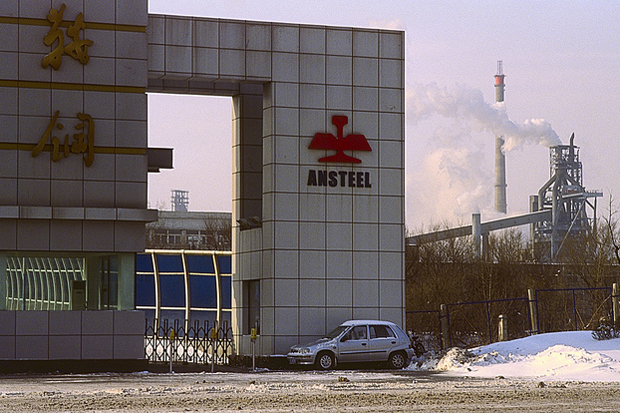
Steel Plant, Anshan, Liaoning, China, February 2009.
Sonya Song / Flickr


Steel Plant, Anshan, Liaoning, China, February 2009.
Sonya Song / Flickr
In May of last year, it looked like impoverished areas of eastern Oklahoma would be getting a lifeline. Coal mining, once a vital industry there, appeared to be headed for a comeback thanks to booming international demand.
Local residents were excited about the prospect of hundreds of new jobs when StateImpact first visited Heavener, but the mining project has stalled.
Ouro Mining Company’s massive Heavener Project along the Oklahoma-Arkansas border was supposed to be producing coal — and jobs — by now. In April 2013, locals in Heavener, like waitress Leslea Absire, couldn’t wait.
“I know it’s a hard, dirty job, but it pays good money,” she said. “And that’s what everybody is looking for, something to — to make it a little better than paycheck to paycheck.”
Or, as lifelong Le Flore County resident Jesse Benson puts it: “Some of us so poor we have to milk the cat to feed the dog. That’s pretty poor, ain’t it?”
The mine still hasn’t opened, and probably won’t for some time. What happened?
“Basically, the coal market crashed,” says Andrew Moore, managing editor for Platts Coal Trader, which follows coal prices and industry trends.
“U.S. coal prices and international coal prices are essentially at multi-year lows because of a massive oversupply,” Moore says.
Countries like Indonesia, the world’s largest exporter of coal, Moore says, have ramped up coal production. “The U.S. has always been sort of a swing supplier.”
Most of Oklahoma’s coal is too high in sulfur to be of much use domestically because of federal environmental regulations. It’s generally too dirty to burn at power plants, but it works great in the steel-making process.
With China booming and the global economy recovering from the 2008 collapse, the price of coking coal — as it’s called — nearly doubled between the fall of 2010 and spring 2011. That was apparently enough to spark Ouro’s interest in eastern Oklahoma’s hard-to-reach coal seams.

Logan Layden / StateImpact Oklahoma
Waitress Leslea Abshire stands next to a case of pies at the Southern Belle Restaurant in Heavener, Okla., in May 2013.
Bob Blackburn with the Oklahoma History Center sees some parallels between Oklahoma’s first coal rush in the late 1800s and what’s happening now.
“So as once we talked about getting it from McAlester to Muskogee, now we’re talking about getting it from Sallisaw to Peking,” Blackburn says. “But the dynamics are the same. What does it cost to get it? What’s the cost to get it from here to there? And what is the market? Is the demand high enough to cover what it costs to get it?”
The answer earlier this decade was a clear ‘yes’. That’s when the coal was selling for more than $300 per ton. Now, a ton of coking coal sells for about $100 on the Asian market, according to information from Platts. Those economies have cooled at the same time they’ve ramped up their own coal production, leaving the U.S oversupplied.
Put more simply: The rest of the world doesn’t need Oklahoma coal right now, so job seekers in Heavener will have to wait. How long is the big unknown.
“You know, I think, based on what we’ve reported, it’s going to be another year before met coal markets rebound,” Moore, the Platts coal expert, says.
Ouro Mining didn’t respond to StateImpact’s request for an interview or a list of e-mailed questions. Democratic State Rep. James Lockhart’s district includes the proposed mine, and he recently received an update on the project from an Ouro go-between.
“He said once they burn enough of that coal where it kind of drives the price up, he said, ‘We’ll start mining again,’” Lockhart says. “But he just said right now it’s not profitable to mine.”
There’s one more issue that could complicate coal’s comeback in eastern Oklahoma. China, in an effort to appear proactive on climate change and spur domestic production, has announced new tariffs on importing the kind of coal Oklahoma offers, and an outright ban on high-sulfur coal from overseas.